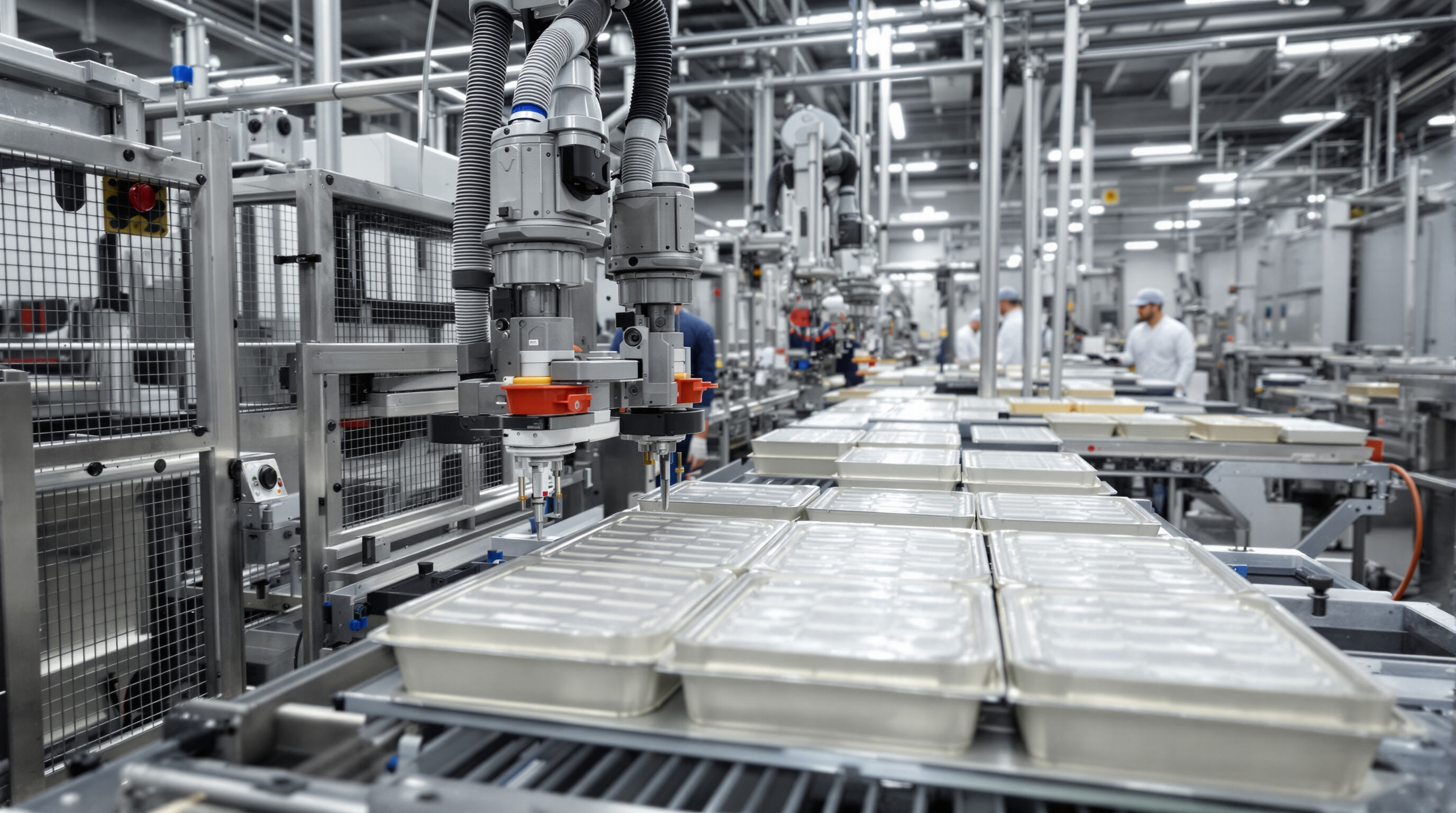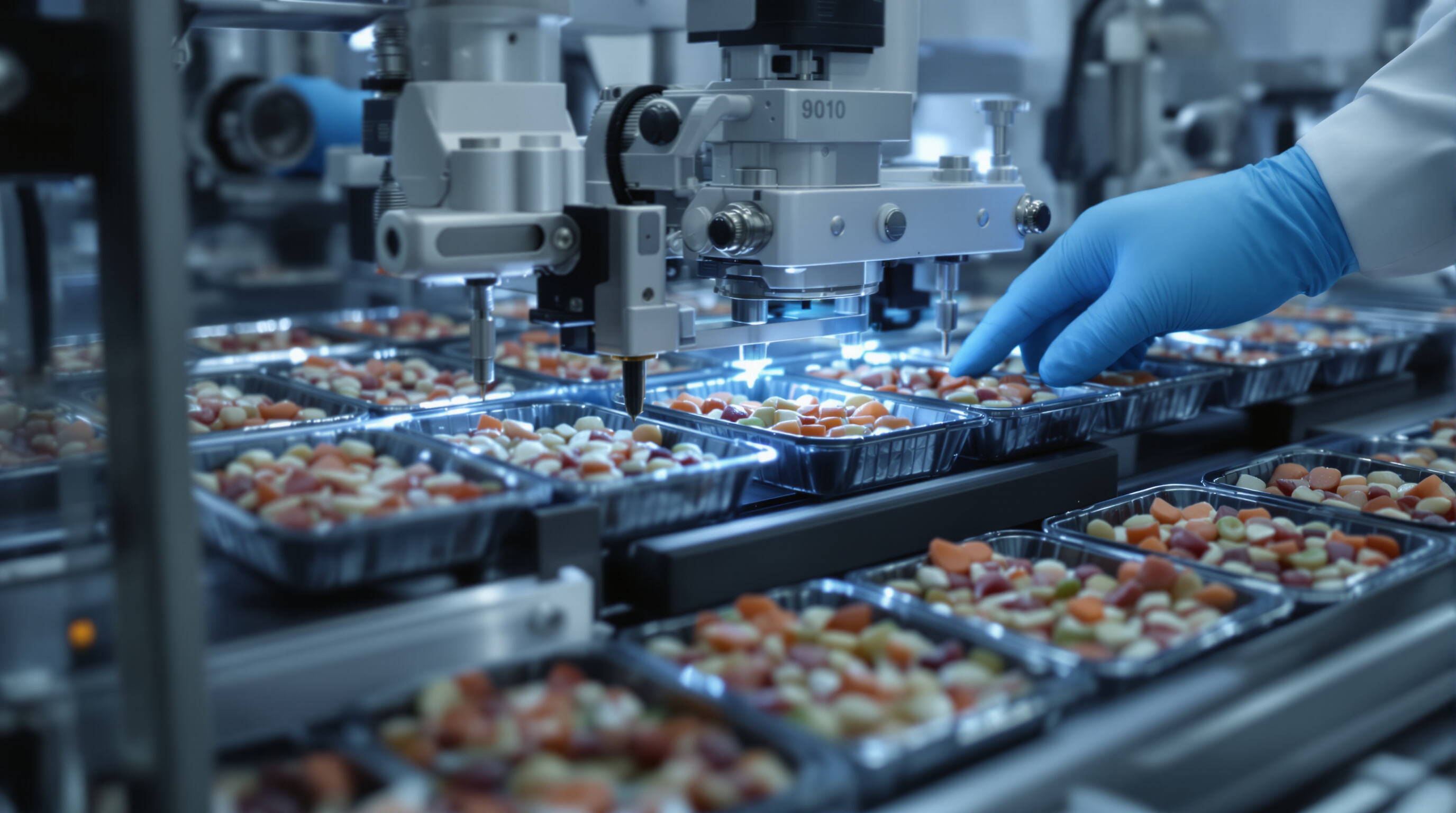Reducing Labor Costs with Automated Tray Sealing Machines

Labor Cost Reduction Through Automation in Packaging Operations
Tray sealing systems that are automated make packaging operations run much smoother since they take care of placing lids, cutting films, and checking quality all on their own tasks that normally need between three to five workers during each shift. According to research done by the Ponemon Institute in 2023, companies in the food processing sector saw a drop of around 68 percent in their packaging workforce needs after adopting such equipment, yet still managed to keep seal integrity at nearly 99.3%. The reason for this boost in efficiency? These machines work nonstop without needing rest periods or dealing with the ups and downs of human performance throughout the day.
Quantifying Labor Cost Savings in Food Packaging with Automated Systems
When a mid size poultry processing plant packages around 12 thousand trays each day, switching from manual sealing stations to just one automatic tray sealing machine means getting rid of eight full time jobs altogether. With workers making about $22 per hour including all their benefits, that adds up to roughly seven hundred forty thousand dollars saved every year. And if we factor in what the company spends on buying the machine plus regular maintenance costs, they actually get their money back within fourteen months. Plus there are other savings too. The automated system cuts down on those unexpected extra costs that always seem to pop up with manual operations.
- 90% fewer product recalls due to sealing errors ($240k/year savings)
- 45% reduction in overtime during peak seasons
- 30% faster onboarding for remaining staff
Case Study: Reduced Workforce Dependency at a Midwest Food Processing Plant
A Midwest ready-meal manufacturer employing 120 packaging workers reduced its team to 28 after installing two inline tray sealers. The automated systems handle 85% of tray loading and sealing tasks, allowing repurposed staff to focus on machine oversight and quality audits. This shift increased throughput by 40% while achieving:
- 73% reduction in ergonomic injury claims
- 56% faster sanitation between product runs
- Consistent 98.6% fill-weight accuracy across shifts
Long-Term Financial Impact of Automatic Tray Sealing Machine Adoption
Over five years, food processors report an average of $3.2M cumulative savings per machine after accounting for all operational costs:
| Cost Factor | Manual Labor | Automated System |
|---|---|---|
| Labor (Annual) | $1.4M | $310k |
| Training | $85k | $18k |
| Error Correction | $220k | $7k |
| Productivity Losses | $160k | $0 |
These systems also enable production scaling by 35–50% without additional hires—essential for meeting seasonal demand or expanding into new markets.
Improving Hygiene and Food Safety with Automation

Minimizing Human Contact to Enhance Hygiene in Automated Packaging
When it comes to keeping food safe during packaging, automated tray sealing systems really make a difference because they limit how much people actually touch the product. Research published on ScienceDirect back in 2024 found that these machines can slash microbial contamination rates by around two thirds when compared with old fashioned manual packing techniques. The real advantage comes from not having workers handle the trays at all, which stops things like skin flakes, hair strands, and even tiny bits from sneezes or coughs from getting onto the food. This matters a lot for products like raw chicken or those pre-cooked meals that sit on store shelves for weeks. A growing number of companies have started adding special antimicrobial coatings to parts of their sealing equipment as an extra layer of protection against bacteria buildup over time.
Compliance with FDA and HACCP Standards Using Tray Sealing Machines
Tray sealing systems today help food processors meet FDA and HACCP requirements thanks to their precise controls and ongoing monitoring capabilities. The automated equipment keeps seals consistent within about half a percent variance, which is roughly 40% better accuracy compared to what humans can achieve according to LinkedIn data from last year. These machines come equipped with sensors that spot when temperatures drift out of range or when seals don't form properly, then kick those problem trays out of the production line right away. What makes these systems really valuable is how they create detailed records automatically, something that saves countless hours during audits for large operations handling upwards of 20 thousand trays each day.
Manual vs. Automated Hygiene Control in High-Volume Food Facilities
| Factor | Manual Operations | Automated Tray Sealing |
|---|---|---|
| Average Contamination Rate | 3.2% (FDA 2023) | 0.4% (Industry Benchmarks) |
| Compliance Consistency | 82% | 99.7% |
| Throughput Capacity | 500 trays/hour | 2,100 trays/hour |
Automated systems eliminate variability in hand-sealing techniques and operate at temperatures up to 90°C to maintain sterilized sealing surfaces. Facilities that transition to automation report 54% fewer sanitation-related shutdowns annually.
Boosting Efficiency and Scalability with MAP Integration
Modified Atmosphere Packaging (MAP) integration with automatic tray sealing machine
Today's tray sealing machines can hit gas ratio accuracy around ±0.5% and keep about 99% gas replacement efficiency, which matters a lot when trying to preserve those sensitive proteins and ready-to-eat meals. These systems take care of gas flushing and check seals automatically, so there's no need to worry about differences between what one person does versus another when packing things like fresh seafood or cut fruits and veggies. Combine this tech with proper cold chain procedures and we're talking about cutting down on packaging waste by roughly 30%, as recent studies from the packaging sector in 2024 show. Plus, everything stays compliant with food safety standards too, which is obviously super important for anyone dealing with consumable products.
Throughput comparisons: Manual vs. automated sealing efficiency
Tray sealing systems that are automated can handle roughly two to three times as many units each hour compared to what someone could do manually. Take for example a meat processing plant somewhere in the Midwest that saw their production jump from just 400 sealed trays during an 8 hour day to over 1,100 once they brought in automation equipment. Manual work tends to get slower as workers tire out through the day, but these machines keep going at pretty much the same pace throughout their operation cycles, usually within about 2 percent variation. This consistency makes all the difference when meeting those strict delivery schedules retailers demand, and means companies don't have to pay extra for overtime hours quite so often anymore.
Scalable production benefits of automated tray sealing systems
Modular tray sealing systems allow processors to scale capacity incrementally by adding sealing heads or conveyor lanes. A Midwest deli meats supplier increased output from 15 to 45 trays per minute over 18 months using upgradable automation. This flexibility supports seasonal demand spikes without permanent workforce expansion, improving labor cost-to-output ratios by 22%.
Extending Shelf Life and Preserving Product Freshness
Hermetic Seals and Consistent Packaging Quality from Automated Systems
Automated tray sealing machines achieve hermetic seals with 99.8% consistency across batches, eliminating human error in manual workflows. Precise pressure and temperature controls during sealing prevent microbial ingress and preserve product texture. Food processors report 52% fewer package integrity failures after adopting automated systems (Food Safety Report 2023).
Shelf Life Extension: Results from Poultry and Seafood Packaging Trials
Recent trials demonstrate how automated sealing enhances preservation of perishable goods:
| Product Category | Shelf Life Increase | Contamination Reduction |
|---|---|---|
| Fresh Poultry | 40% (14–20 days) | 62% |
| Raw Seafood | 35% (12–16 days) | 58% |
Automated sealing reduces oxygen transmission by 83% compared to manual methods, significantly slowing lipid oxidation in protein-rich foods. When combined with Modified Atmosphere Packaging (MAP), these systems maintain optimal gas compositions throughout distribution, maximizing freshness and reducing spoilage.
Frequently Asked Questions
What are the benefits of automated tray sealing machines?
Automated tray sealing machines significantly reduce labor costs by eliminating the need for multiple workers to handle packaging tasks. They also enhance seal integrity, reduce contamination rates, and comply with regulatory standards, ultimately saving companies money in the long term.
How much can companies save by switching to automated tray sealing?
The annual savings for companies using automated tray sealing machines can be significant. For example, a mid-size poultry plant may save around $740,000 yearly by automating packaging operations, with a full return on investment within 14 months.
How do automated tray sealers improve hygiene?
Automated tray sealers minimize human contact with products, significantly reducing microbial contamination rates. They also ensure a higher level of compliance with FDA and HACCP standards through consistent sealing performance.
Can automated tray sealing machines scale with production needs?
Yes, automated tray sealing systems can be scaled by adding additional sealing heads or conveyor lanes. This flexibility allows companies to adjust to seasonal demand spikes or expand into new markets without hiring additional staff.

